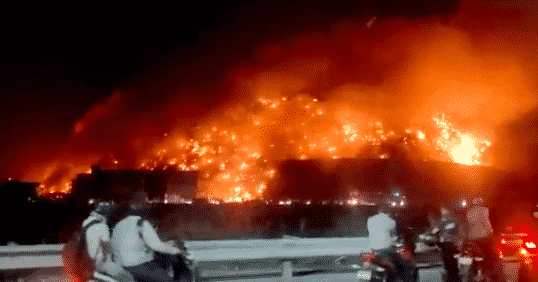Regions of India and Pakistan are sweltering through their third month of a record-breaking heatwave, with no sustained relief in sight. Swaths of north-western India and Pakistan have been experiencing daytime temperatures in the 40s since March. Bangladesh and Sri Lanka have also been affected in recent weeks.
While May is usually India’s hottest month, this year’s heatwave hit much earlier than expected, catching citizens and governments off-guard. This year’s March was India’s hottest on record, followed by their hottest April in 122 years. For Pakistan, April was the warmest since 1961, and temperatures soared to 51C in Jacobabad over the weekend.
The current heatwave has also spread over a much larger area than usual, but hasn’t been as deadly as last year’s, most likely due to lower humidity levels. 700 Pakistanis and 2,300 Indians perished in the monsoon-period heatwave of 2021.
Still, this year’s heat has already claimed the lives of at least 25 in India and 65 in Pakistan, with the true casualty count likely to be much higher.
Consequences of Heatwaves
The heatwave has also led to spikes in air pollution in major cities, flash floods in Pakistan as mountain glaciers melt, and extensive power outages. In order to survive the heat, people must rely on air conditioners and fans, catapulting electricity demand and putting power grids under stress.
As a result, areas of Pakistan have seen outages up to 12 hours long, while two-thirds of Indian households have been stranded without power. Indian governments have cancelled hundreds of commuter trains to free up space for coal to be transported to energy plants suffering shortages due to increased demand.
No electricity means no clean water for many households, too. And the heat has worsened droughts in some South Asian areas, exacerbating water crises.
The remote Pakistani town of Pir Koh has been identified as the ground-zero for a deadly cholera outbreak linked to contaminated drinking water. Since the first cases identified on April 17th, over 2000 people have become infected and six have died. A local said residents were “forced to drink dirty water” due to a lack of rain this year.
Political disruptions and economic fallout from COVID have further impeded official responses to the heatwaves. High COVID cases remain a burden on healthcare systems now finding it difficult to cope with heat-related illness.
60% of working Indians, and 40% of Pakistanis, are employed in agriculture, meaning the majority of their days are spent labouring outdoors. Now, these people are forced to choose between working in potentially fatal weather conditions, or losing their income.

A Red-Hot Future
It’s a no-brainer that climate change is the primary factor behind South Asia’s weather emergency, and will only worsen similar events in future. Even cooler regions are seeing sustained higher temperatures. But a recent study by the Met Office reveals just how critical South Asia’s circumstances are.
Headed by Dr Nikos Christidis, the report concludes that climate change has made record-breaking heatwaves in north-west India and Pakistan 100 times more likely. Working off record temperatures in 2010 as a baseline, the region should expect a heatwave exceeding those conditions once every three years.
Without climate change, these extreme temperatures would only occur once every 312 years. Should climate change follow the Met Office’s predictions, by the end of this century India and Pakistan will experience catastrophic temperatures every year.
Follow Maddie’s journalism on Twitter.
Sign Up To Our Free Newsletter